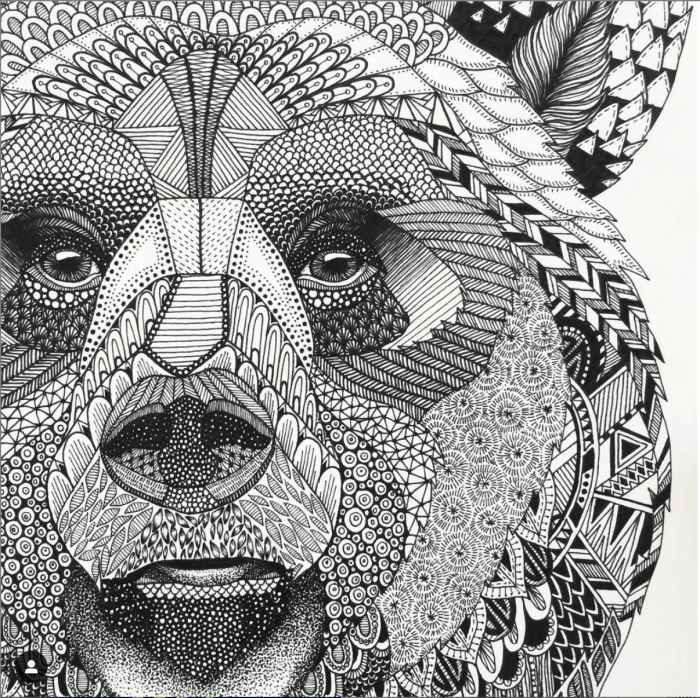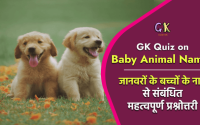Animal Zentangle Coloring Page Design
Zentangle Design Principles in Animal Coloring Pages: Animal Zentangle Coloring Page

Animal zentangle coloring page – The captivating world of animal coloring pages finds a delightful partner in the intricate art of Zentangle. Zentangle’s structured patterns not only add visual complexity and depth to animal illustrations but also transform the coloring experience into a meditative and therapeutic activity. The combination allows for both creative expression and mindful relaxation, making these pages appealing to a wide range of ages and skill levels.
Zentangle patterns enhance the appeal of animal coloring pages by adding layers of texture and detail that bring the animals to life. Simple animal Artikels become canvases for intricate designs, fostering a sense of accomplishment and artistic satisfaction in the colorist. The repetitive nature of Zentangle patterns promotes focus and concentration, making it an ideal activity for stress reduction and mindfulness.
Zentangle Patterns Suitable for Various Animals
The beauty of Zentangle lies in its adaptability. Different patterns lend themselves to various animal characteristics, enhancing their unique features. For instance, the flowing, organic shapes of Zentangle are perfectly suited to capture the sleekness of a cat, while sharper, more geometric patterns can emphasize the powerful build of a dog. Birds, with their delicate forms and intricate feather patterns, provide a natural canvas for detailed Zentangle work.
Design Tips for Incorporating Zentangle Elements into Animal Illustrations
Successfully integrating Zentangle into animal illustrations requires careful consideration of both the animal’s form and the pattern’s characteristics. Begin by outlining the animal, then strategically plan the placement of Zentangle patterns. Consider using lighter patterns in areas needing less visual weight and bolder patterns for areas requiring emphasis. Ensure that the patterns complement the animal’s form, rather than overwhelming it.
The use of varying line weights and shading within the patterns can add further depth and dimension to the final artwork. Experiment with different pattern combinations to achieve unique and visually appealing results.
Benefits of Using Zentangle Patterns for Stress Relief and Mindfulness in Coloring
The repetitive and structured nature of Zentangle promotes a state of mindfulness, diverting attention from anxieties and promoting relaxation. The focus required to create intricate patterns encourages present moment awareness, effectively reducing stress and improving mental clarity. The act of coloring itself is inherently calming, and the addition of Zentangle patterns amplifies this effect, making the activity a powerful tool for stress relief and self-care.
The sense of accomplishment upon completion further boosts self-esteem and provides a positive feedback loop, enhancing the overall therapeutic benefits.
Examples of Zentangle Patterns for Different Animals
The following examples demonstrate how different Zentangle patterns can be adapted to suit the unique characteristics of various animals.
Animal Zentangle coloring pages offer a wonderfully relaxing way to unleash your inner artist, focusing on intricate patterns rather than realistic depictions. But if you’re feeling a bit more romantic, check out these adorable animals in love coloring pages for a cuter, cuddlier coloring experience! Then, once you’ve finished showering those lovebirds with color, return to the zen-like calm of your animal Zentangle masterpiece.
- Lion: A lion’s mane could be beautifully rendered using a combination of “string” patterns, creating a textured, flowing effect. The body could incorporate more geometric patterns like “prisms” or “squares,” emphasizing the lion’s powerful physique. The face could use smaller, more detailed patterns like “dots” and “squiggles” to highlight the features.
- Butterfly: The wings of a butterfly offer a perfect canvas for intricate, organic patterns. “Meandering paths” and “flowing lines” would create a sense of movement and fluidity, reflecting the butterfly’s flight. The body could be adorned with simpler patterns like “dots” or “circles,” providing a visual contrast to the more complex wing designs.
- Elephant: An elephant’s wrinkled skin provides a unique textural opportunity. “Pebble” patterns could be used to represent the skin’s texture, while “spirals” and “dots” could be incorporated into the ears and trunk. The overall pattern should be relatively large-scale to match the elephant’s size and majestic presence.
Creating “Animal Zentangle Coloring Page” Designs

Embark on a creative journey where the intricate beauty of Zentangle art intertwines with the captivating charm of the animal kingdom. This process transforms simple animal sketches into mesmerizing coloring pages, brimming with detail and ready to be brought to life with color. The key lies in understanding how to seamlessly blend the organic forms of animals with the structured elegance of Zentangle patterns.
Sketching an Animal Base for a Zentangle Coloring Page, Animal zentangle coloring page
Begin by selecting your animal subject. A simple, recognizable silhouette works best for beginners. Lightly sketch the animal’s Artikel, focusing on the basic shapes and proportions. Avoid overly detailed initial sketches; think of this as a foundation upon which your Zentangle patterns will flourish. Consider the animal’s posture and features – a perched owl will have different structural needs than a galloping horse.
Keep your lines light and fluid, allowing for easy modification and pattern integration. Remember, this is not a detailed anatomical drawing; it’s a framework for your artistic expression.
Integrating Zentangle Patterns into an Animal Sketch
Once your basic animal sketch is complete, begin incorporating Zentangle patterns. This involves carefully observing the animal’s form and strategically placing patterns within its contours. Curved lines often work well to follow the animal’s body, while more geometric patterns can fill in flatter areas. Consider using different patterns to create texture and depth. For example, a fluffy owl might use patterns that create a soft, feathery effect, while its sharp beak could be accentuated with more angular designs.
Experiment with pattern size and density to create visual interest and avoid overwhelming the animal’s form. Don’t be afraid to break up larger areas with a variety of patterns to add complexity and depth.
Creating a High-Resolution Digital Version of an Animal Zentangle Coloring Page
After completing your hand-drawn design, scan it at a high resolution (at least 300 DPI) to create a digital version. Using image editing software, clean up any stray lines or smudges. You can adjust contrast and brightness to ensure your patterns are clearly defined. Consider adding a subtle background texture or color to enhance the overall aesthetic.
Finally, save your artwork in a high-resolution format suitable for printing, such as a PNG or TIFF file. This high-resolution image will ensure your coloring page prints clearly and maintains its intricate details.
Step-by-Step Guide for Creating an Owl Zentangle Coloring Page
1. Sketch the Owl
Lightly sketch an owl silhouette, focusing on its round body, large head, and distinctive facial features. Keep the lines simple and flowing.
2. Divide into Sections
Divide the owl’s body into distinct sections – head, body, wings, and talons – to facilitate pattern placement.
3. Apply Base Patterns
Begin applying simple Zentangle patterns to each section. Use curved patterns for the feathers and more geometric patterns for the beak and eyes.
4. Add Detail and Texture
Introduce smaller, more intricate patterns to add detail and texture to the feathers and other areas. Vary the pattern sizes and densities to create visual interest.
5. Refine and Enhance
Carefully refine your patterns, ensuring smooth transitions between different sections and patterns. Adjust line weights and densities to create depth and visual appeal.
6. Digitalization and Refinement
Scan the completed artwork at high resolution (at least 300 DPI). Use digital software to clean up and enhance the image.
7. Final Touches
Adjust the contrast and brightness to optimize the clarity of the patterns. Add a subtle background if desired. Save the file in a high-resolution format (PNG or TIFF).
Ideal Resolution and File Format for a Printable Animal Zentangle Coloring Page
The ideal resolution for a printable animal Zentangle coloring page is 300 DPI (dots per inch) or higher. This high resolution ensures that the intricate details of the Zentangle patterns are crisp and clear when printed. The recommended file formats are PNG (Portable Network Graphics) or TIFF (Tagged Image File Format), both of which support high-resolution images without significant compression artifacts.
These formats ensure the quality of your design remains intact during printing, preventing any loss of detail or clarity.
Illustrative Examples and Visual Descriptions

Let’s delve into the vibrant world of animal zentangle coloring pages, visualizing the intricate designs that can transform ordinary creatures into captivating works of art. These examples showcase the versatility of the zentangle technique and its ability to enhance the visual appeal of animal illustrations.Now, let’s explore specific examples, showcasing the potential of zentangle in animal-themed coloring pages. Each example demonstrates how different patterns and styles can create unique visual experiences.
Monkey Zentangle Coloring Page
Imagine a playful monkey, perched on a branch, its fur a canvas for a riot of zentangle patterns. Curving lines, reminiscent of vines, intertwine with tiny dots and paisley shapes, creating a textured effect that mimics the monkey’s fur. The background features larger, bolder zentangle designs – perhaps swirling patterns evoking the movement of leaves in a gentle breeze, or geometric shapes forming a stylized jungle canopy.
The monkey’s eyes are accentuated with carefully placed dots and lines, adding a touch of mischievous sparkle. The overall effect is one of playful energy and intricate detail.
Majestic Tiger Zentangle Coloring Page
This coloring page depicts a majestic tiger, its stripes transformed into stunning geometric zentangle designs. Each stripe is not merely a solid color but a complex interplay of lines, dots, and shapes, creating a mesmerizing optical illusion. The tiger’s fur, outside the stripes, might feature smaller, more delicate patterns, contrasting with the bolder stripes. The background could be a simple, yet elegant, pattern of repeating shapes, or perhaps a more intricate design mimicking the texture of grass or leaves.
The tiger’s powerful gaze is enhanced by meticulously crafted zentangle details around its eyes.
Serene Underwater Zentangle Scene
Picture a serene underwater scene, teeming with life. Vibrant coral formations are adorned with intricate zentangle patterns – radiating lines mimicking the growth of coral, or geometric shapes suggesting the crystalline structure of its skeleton. Fish, gracefully swimming through the scene, have scales and fins covered in delicate zentangle designs. Perhaps one fish features a pattern of flowing lines, suggesting movement, while another has a more geometric, almost mosaic-like design on its scales.
The overall color palette would be soft and calming, reflecting the tranquil nature of the underwater world.
Whimsical Dragon Zentangle Coloring Page
This coloring page showcases a whimsical dragon, its scales meticulously detailed with zentangle patterns. Each scale is a miniature work of art, with varying patterns creating a sense of depth and texture. The dragon’s fiery breath is rendered as a swirling mass of lines and shapes, suggesting the movement and heat of the flames. The dragon’s wings might feature feather-like patterns, created using repetitive shapes and lines.
The background could be a simple gradient, allowing the dragon to be the focal point, or a more complex landscape with additional zentangle elements.
Friendly Dog Zentangle Coloring Page
This coloring page features a friendly dog, perhaps a golden retriever, with simple, yet engaging, zentangle patterns. The dog’s fur is adorned with repetitive, easily-replicable patterns, such as dots, small circles, or short lines. These patterns are clustered to create the texture of fur, avoiding overly complex designs that might be challenging for younger colorists. The dog’s eyes are highlighted with a few carefully placed dots and lines, giving them a friendly and expressive quality.
The background could be a simple, solid color or a very basic pattern, allowing the dog to remain the central focus.



